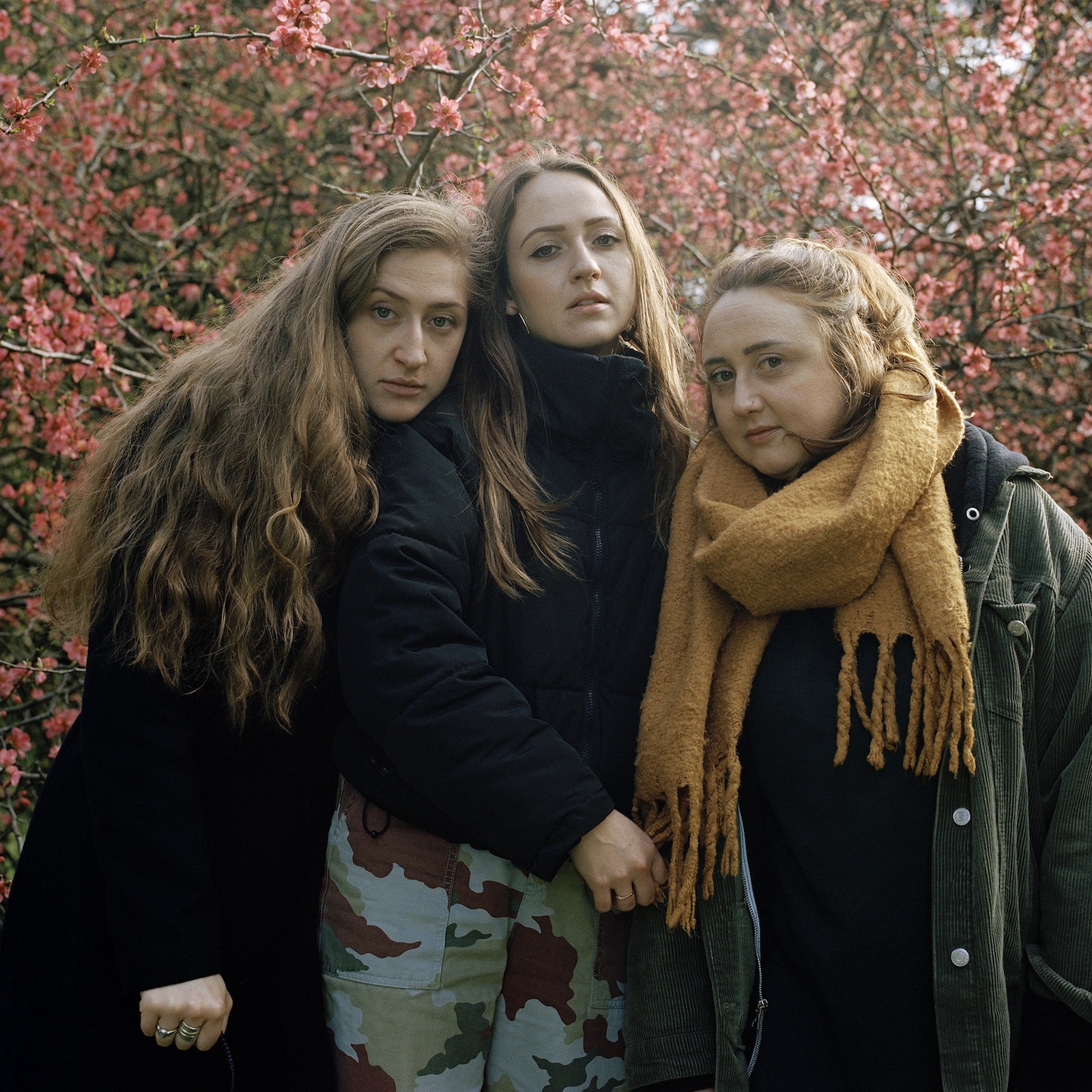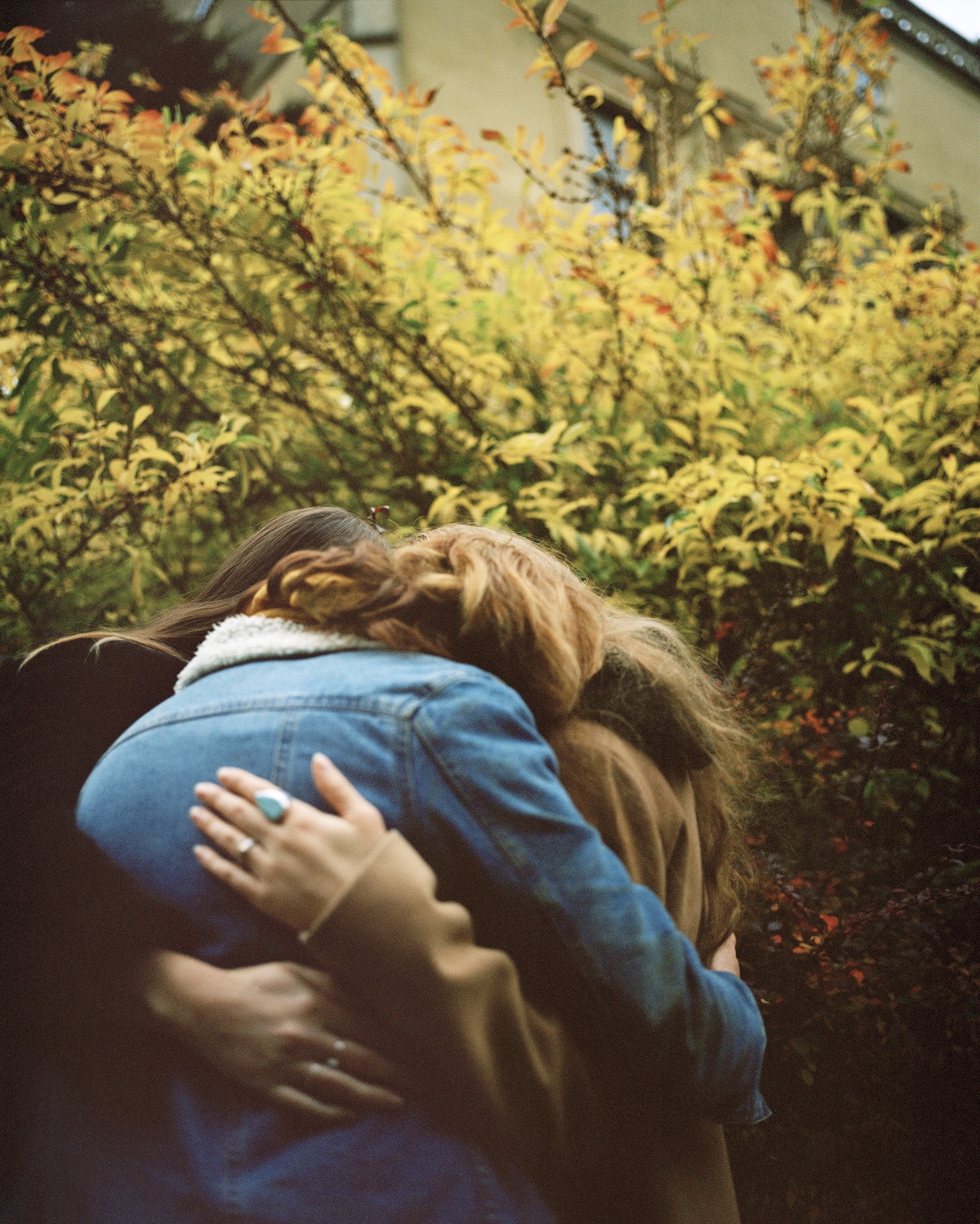Mystic Photography

Young visual artist Amy Mifsud who just graduated from UWE, Bristol explores the use of sculpture, still life and dance through photography. Her use of analogue cameras can be seen in the poetic hues and references to the past that underlie her photography. I saw her work for the first time at the Old Truman Brewery’s ‘Free Range 2019’ graduate show a while ago, and instantly loved it!
The mystique and personal touch in her work draws you in, inviting our eye to dwell on each photograph.
In this interview Amy tells us more about the stories imbedded in her series. Combined these photographs seamlessly weave together sisterhood, womanhood, lineage -ties that enhance our sense of self.

Space, air, fire, water, earth: which of these elements would you choose in relation to your practice or yourself, and why?
Water. Growing up along the English coast and swimming at all times of the year has given me a deep longing for the sea.
I love being near the water, feeling the breeze, listening to the waves. When I left the seaside I found that I missed the sound of the sea more than anything.
During my art studies I began to notice strong links between water and being a woman.
The symbolism of water carries a variety of meanings. For me the water’s power is breathtaking, unrelenting and relinquishing of evil. Like all elements it is a force to be reckoned with.

Is there a particular artwork, person, place or situation that inspired you to become an artist?
Being creative is an important part of who I am. My mother who inspired my new series Hag Stones has always encouraged me to do some form of art with her. Dorset where I am from is an incredible landscape and many artists live there.
My mother is the one who helped me pursue the arts to a higher level and I truly value the artistic impact she has made on my life.
When I began to look into portraiture I found a calling. I love working with people, and capturing a person’s character in an image became something I increasingly wanted to achieve.
Vivian Maier is the first artist I got slightly obsessed with. I am struck by the mystery that shrouds her persona, and my work is inspired by the sense of intrigue in her portraiture.

Do you consider yourself spiritual and how does this feed into your work?
I’ve always enjoyed learning about religion, even at school. I’m not religious but I do believe there is something innate within all of us that seeks out the ‘other’, the unknown, a kind of mystery. I guess I am a little spiritual in how I view the world and in my encounters with others.
The penultimate image within the series Hag Stones was taken at St Catherine’s chapel in Abbotsbury. It sits atop a hill in the sleepy village of Abbotsbury.
This utterly isolated setting conjures calm, meditation, withdrawal, and the peculiar atmosphere has stayed on my mind ever since.
Used as a beacon, this landmark for sailors returning from the sea survived the Dissolution.
Its name comes from Saint Catherine, the patron saint of spinsters and of all vulnerable women.
‘Hag’ in my series’ title refers to and subverts the notion of witchcraft underpinning medieval folk stories.
‘Hag’ here is empowering an ode to lineage, ancestry and kinship in relation to women and sisterhood.
Is there a book or author in general that stimulates you?
The book ‘Home Dartmoor’ by Garry Fabian Miller was a key source of inspiration for Hag Stones. Miller’s text persuaded me to look back on the history of Dorset, my home, which I longed for in my final year of university.
Exploring self portraiture as a form of expression, I found Jill Beth Hanne’s work especially intriguing.
I felt I also needed to experiment with self-portraiture to depict and express feelings of self-acceptance and grief within the safety net of my university group and family members. I try to read as much and as widely as possible. I love the written word and am always on the hunt for a new book. I read a fair amount of crime stories based on actual events. ‘This is going to hurt’ by Adam Kay for example is a fascinating read.

Notions of sisterhood, family ties/ the past seem to underpin your series ‘Hag Stones’. How do you use photography to capture this idea of female relationships connected to fantasy/folklore/superstitions?
My mother has always said that my sisters and I are descended from Queen Boudica* and I’ve looked up to powerful independent women ever since.
My family is based on Portland Isle in Dorset. This island is quite eccentric and progressive, distinctively unconventional, with stickers like ‘keep Portland weird’ slapped onto the back of every other car.

Historically women could be land owners in their own right, unmarried, a long time before this became the norm.
Unsurprisingly, the dedicated campaigner for women’s rights Marie Stopes relocated to Portland to avoid trouble in London .
*[Boadicea, or ‘Buddug’ in Welsh, 1st century ruler of the Icon tribe of East Anglia who led an uprising against the occupying forces of the Roman Empire in AD 60 or 61]
I examined female relationships that have shaped me in places where I feel safe, such as my sisters’ homes, Portland, Kew Gardens and Saint Catherine’s chapel.
This element of safety is dear to me as the series at times triggered a sense of vulnerability.
Like a cathartic process I felt it imperative to only be in places of sanctuary.
My mother appears throughout the series in a magical form, depicted only through archival imagery as a little girl at the age of six.
I wanted her to be the voice of wonder in my life.
A hag stone is part-talisman part-omen, used for protection, to enhance a witch’s magic.
Without knowing my mum always finds these stones on an outing at the beach.
They’ve always surrounded me by force of habit and only through researching have I found out their true meaning. I’ve kept hag stones hung in my room for years, as was the custom centuries ago at the front of Portland homes.
My Photobook is made of four stones in total, one for each daughter and one for our mother, alongside a horoscope from 1996, my birth year.
I grew very fond of this horoscope after finding it in my mother’s archive. She held on to this writing as a token of the gift I had made for her at the time.
She sensed that it perfectly encapsulated my university experience and my final year’s progress.
Exploring these narratives together with my sisters felt crucial, and this process strengthened our relationships which I am forever grateful for.

Please tell us what you are currently working on and what you are looking forward to this year in terms of exhibitions and shows?
As I’ve just graduated I’m currently disseminating my project Hag Stones. I plan to launch a few new projects but would like these to have a longer time frame, which is why I am currently building on my existing connections, and not rushing into producing new imagery.
My work has been shown in Liverpool with the RPS Heroine’s exhibition (Un)Framing our identities throughout September and I look forward to seeing all the new exhibitions taking place in Bristol in the coming year, including all of the captivating guest speakers at the Martin Parr Foundation.
ABOUT HAG STONES BY AMY MIFSUD
A poetic discussion of the relationship three sisters can form together and how my identity has been shaped by the women in my family. This series came through my transition into womanhood and my family members accepting me fully as an individual. Elements of fantasy and superstition have been heavily underpinned by my two sisters and my mother. Through a series of portraits, self-portraits and observations, I’ve begun to further understand my own thinking and how that has been informed. Using an analogue medium has helped to add a new depth to my project enhancing my colour palette with soft evening hues, reminiscent of the closing of a day and new beginnings.
Find out more about Amy Mifsud on her website
Author: Alexandra Etienne


